Auditioning Lifeguards Brave Sunday Chill
County Program Strives for Efficiency, Tighter Organization
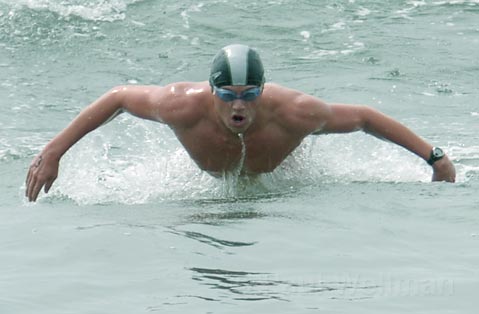
Santa Barbara County’s Parks Department – which supplies lifeguards at all of the county beaches and at the Lake Cachuma swimming pool – held its first round of beach lifeguard tryouts on Sunday, March 29. The competition was held in conjunction with the UCSB Junior Lifeguards Program, which also held tryouts for its open instructor positions this Sunday at Goleta Beach County Park. Amid the uninviting backdrop of a steel-gray sky and choppy surf, about 20 people braved 57-degree water and comparable air temperatures to complete a 1,000-meter swim around the Goleta Pier, followed by a half-mile beach run and a 1,000-meter paddle board course back around the pier. The top finisher, Frank Reynolds, 22 – a recent graduate of UC Berkeley, where he played water polo – finished the course in just over 29 minutes, protected from the cold by nothing more than a gold-and-black checkered Speedo.
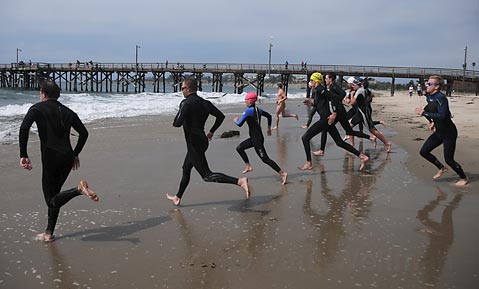
This year’s audition process marked a change for the County Lifeguard Program – for which, in the interest of full disclosure, this reporter once worked. In the past, the county lacked the staffing and resources to hold its own tryouts, and often partnered with the City of Santa Barbara to scoop as many qualified guards as it could. Although the county appears to be hurting for cash these days, a few motivated lifeguard supervisors have shown what a little bit of creativity, partnerships, and some grant money can accomplish by garnering equipment, training, and ever-more attractive candidates for the small service. “We’re trying to implement a new discipline in the County Guard program,” said Assistant Lifeguard Supervisor Mike Topping, who has worked for the service since 2006 in addition to working as a patient care technician in the ER at Goleta Valley Cottage Hospital. “There’s going to be more emphasis on training this year.”
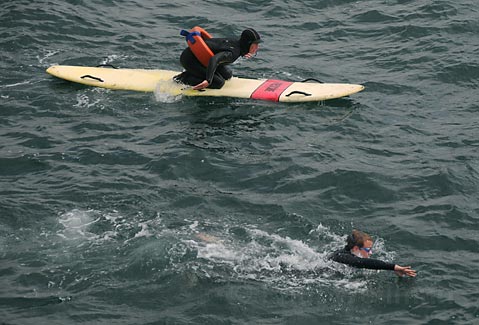
In 2007, the County Parks Department hired a new safety officer and aquatics supervisor, Bill Falzone, who had a different vision of how training should be run for the county’s lifeguard staff. Although Falzone has since moved to New Zealand, Topping said that daily safety and first aid training and a heavier emphasis on professionalism changed what had been a pretty laid-back program into something more along the lines of an emergency medical service provider. This year, Topping said, more effort will be focused on “red card drills,” or live rescue scenarios in which lifeguards will be required to respond to situations that might occur while they are on duty. Some of these drills – which will include aquatic and medical emergencies – will be announced, but others will be impromptu, testing the guards’ ability to recognize dangerous situations as they arise. “Our main focus is safety this year – that we’re prepared and we’re trained,” Topping said.
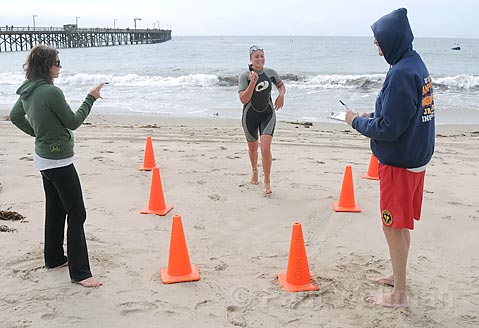
Also new in the training regimen this season is a greater emphasis on medical skills. In the past, all guards were required to have, at the very least, training in basic first aid and cardiopulmonary resuscitation (CPR). Now, as a result of free training offered by the Fire Services Training Institute, all county lifeguards will receive a California Title-22 First Responder certification, which they can get only after they’ve completed 40 to 60 hours of medical training. “This year, all of our guards will be either Title-22 or EMTs, which is huge,” said County Lifeguard Supervisor Jon Menzies. Some guards have already been trained, and new hires will take the next class, which will be offered to them in May.
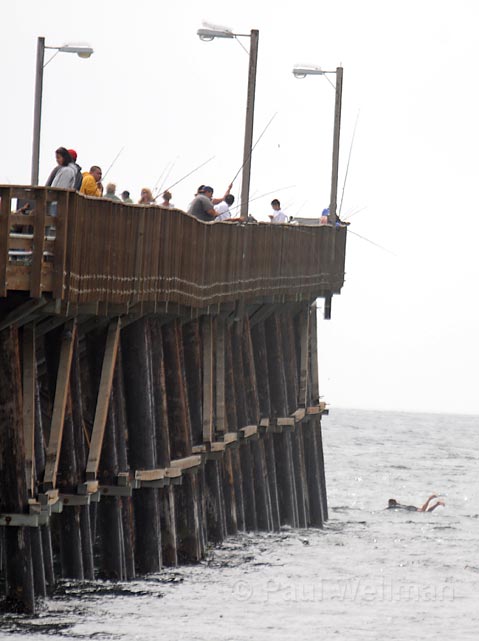
In a partnership that began last summer, county lifeguards will hold joint training events with UCSB’s Junior Lifeguard program. “They’re here in our backyard, so we’re encouraging them to train alongside of us so that hopefully one day they can join us,” Topping said. While the City of Santa Barbara’s lifeguard service has historically used the City Junior Lifeguard program as sort of a feeder for its ranks of beach lifeguards, the county has not enjoyed the benefit of such a relationship until recently. Furthermore, through a grant from UCSB’s Coastal Fund, the county received funding last year to staff the beach at Campus Point – on campus property, but near a county park on the Isla Vista side of the point – with lifeguards during summer months.
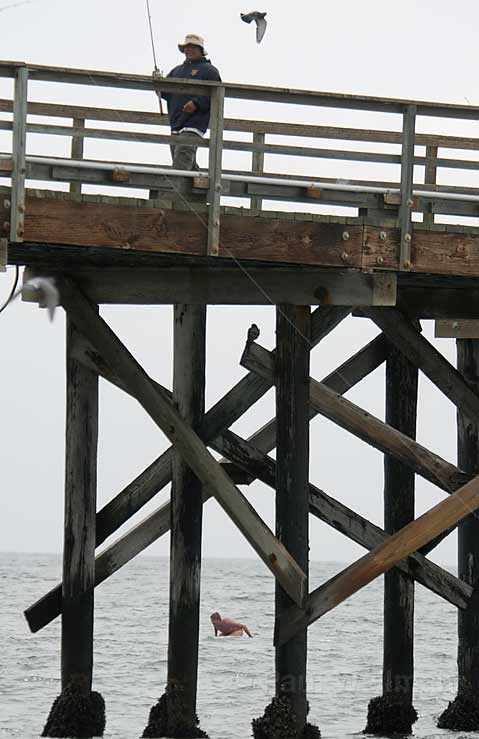
Menzies said he expects that the partnership with UCSB will continue, as the presence of lifeguards at Campus Point provides a safer atmosphere for beachgoers and training opportunities for UCSB’s Junior Guards. Ever mindful of the county’s ailing budget, lifeguard organizers are always looking to cut costs and increase external funding. This year, the Santa Barbara chapter of the American Red Cross will be funding half of the lifeguards’ T-shirts, which are a required uniform item. Menzies is also looking to retire the four-wheel-drive pickup truck he and other supervisors have been using to travel the many miles between county beaches, reserving it for emergency use on the sand at Goleta Beach. “Having an Emergency Response Vehicle at Goleta Beach not only minimizes response time but also enables guards to transport critical medical equipment such as emergency oxygen, an AED, and a backboard,” he said, adding that a more fuel efficient vehicle will be used for inter-park trips.
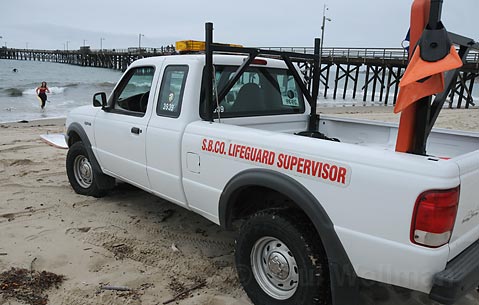
Beginning on May 23, Santa Barbara County’s lifeguard season lasts 107 days, covering weekends until June 13, when guards will begin manning county park beaches – which include Arroyo Burro, Goleta Beach, Jalama, and Campus Point – every day until Labor Day weekend. The pool at Lake Cachuma County Park is also staffed by the county, but those lifeguards – who require a different skill set than the cadre of beach guards – will be selected from a different pool of applicants.
The remainder of the beach lifeguard candidates will try out at 11 a.m. on Sunday, April 5, at Goleta Beach. For more information about becoming a lifeguard, visit the County Parks Department’s Web site.



